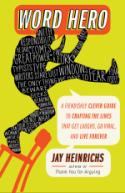Rhetorical Eye of the Storm
 Monday, August 30, 2010 at 10:35AM
Monday, August 30, 2010 at 10:35AM We all remember it keenly: water pouring through broken levees; mothers holding their children above the waterline; people stranded on rooftops begging for help; bodies lying in the streets of a great American city.
President Barack Obama in a speech about New Orleans
pragmatographia (prag-ma-toe-GRAF-ia), the action sequence. A form of enargeia (en-AR-ja), the special effects of rhetoric. From the Greek, meaning “action writing.”
 President Bush’s inaction over Katrina spoke louder than words, proving the conservative claim that you can’t rely on government. Obama’s latest speech tries to show that government actually can work. But first he wants to recall the disaster and its shameful aftermath. “There’s no need to dwell on what you experienced and what the world witnessed,” he says, and then he proceeds to dwell on the experience with a neat pragmatographia, the action sequence of oratory.
President Bush’s inaction over Katrina spoke louder than words, proving the conservative claim that you can’t rely on government. Obama’s latest speech tries to show that government actually can work. But first he wants to recall the disaster and its shameful aftermath. “There’s no need to dwell on what you experienced and what the world witnessed,” he says, and then he proceeds to dwell on the experience with a neat pragmatographia, the action sequence of oratory.
You can find the pragmatographia in Shakespeare whenever breathless characters describe what took place offstage, while the magic of technology lets film directors do the same thing with a short sequence of scenes called a montage.
A good pragmatographia builds to a climax, and so does Obama’s. It starts with women holding up their babies, jumps in time to desperate victims on rooftops, and concludes with scandalous corpses.
Want to try the figure yourself? Consider using an individual or very specific scene for your climax—not corpses but a single awful body. An individual conveys more emotion than a mass of people. And, despite its name, emotion is what the pragmatographia is all about.


Reader Comments (4)
More to come!